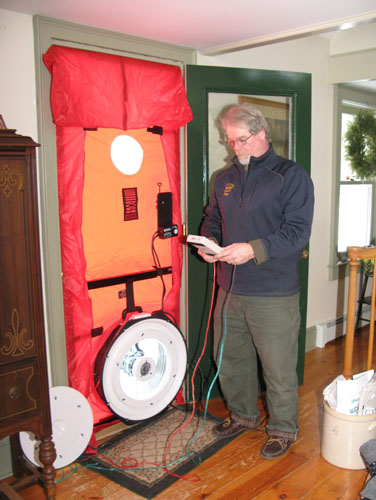Energy Audit
 Many people have heard of an energy audit, but are not really sure what it is. In general, there is an analysis of the building through specific testing and inspection, which is followed by recommendations for improvements that are cost-effective. As you will see, the basic principle is readily understood, but there are advantages beyond getting better energy efficiency and lower operating costs.
Many people have heard of an energy audit, but are not really sure what it is. In general, there is an analysis of the building through specific testing and inspection, which is followed by recommendations for improvements that are cost-effective. As you will see, the basic principle is readily understood, but there are advantages beyond getting better energy efficiency and lower operating costs.
An energy auditor visits a building and its owners to assess how the building is performing. Through the use of special equipment, the auditor can test the house for air leaks, if there is insulation present, and if that insulation is effective. Most air leaks are never noticed by the inhabitants.
The auditor is also trained to test for health and safety issues. One item of major importance to health and safety is testing the chimney to ensure that in a worst-case scenario, flue gasses will not back-draft down the chimney and into occupied space.
A trained auditor will also test combustion equipment such as water heaters, gas stoves, furnaces and boilers for efficiency, carbon monoxide and safety.
The auditor will also take a survey of the major electrical appliances and make recommendations about them. After inspecting, testing and measuring, the energy auditor can decide what energy retrofits are practical and cost-effective.
As it turns out, most retrofit work that an energy auditor might recommend has a big impact on comfort, durability and safety in a positive way. A real advantage of testing and measuring attributes of the way a house works is:
- a) It allows the auditor to pinpoint the problems and make recommendations to achieve a cost-effective goal.
- b) The auditor can test again when the recommended changes have been made, to ensure that they have met their goals. In this way, a homeowner can rest assured that they got what they paid for.
In the end, a home that has received performance upgrades will be likely to be more comfortable, more durable, be safer to live in and cost less to operate!
